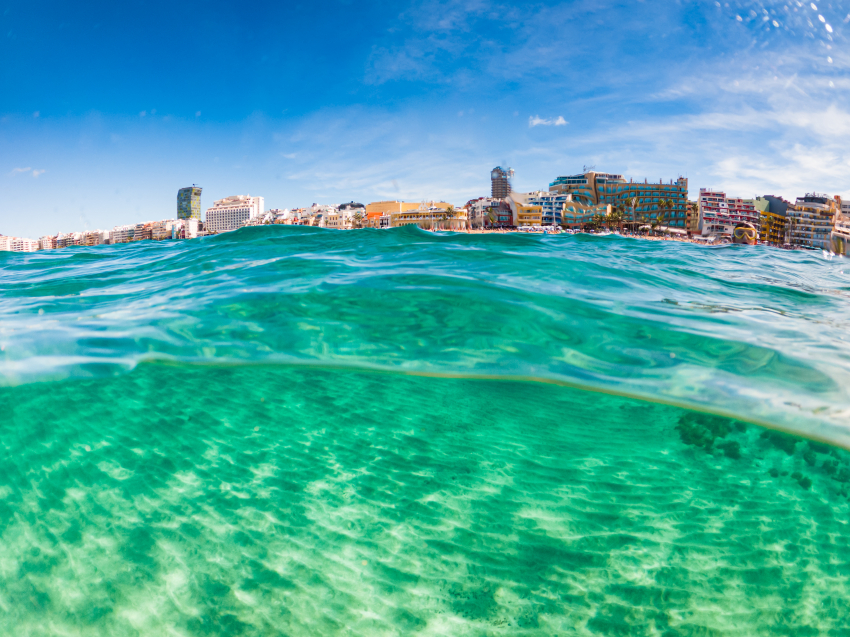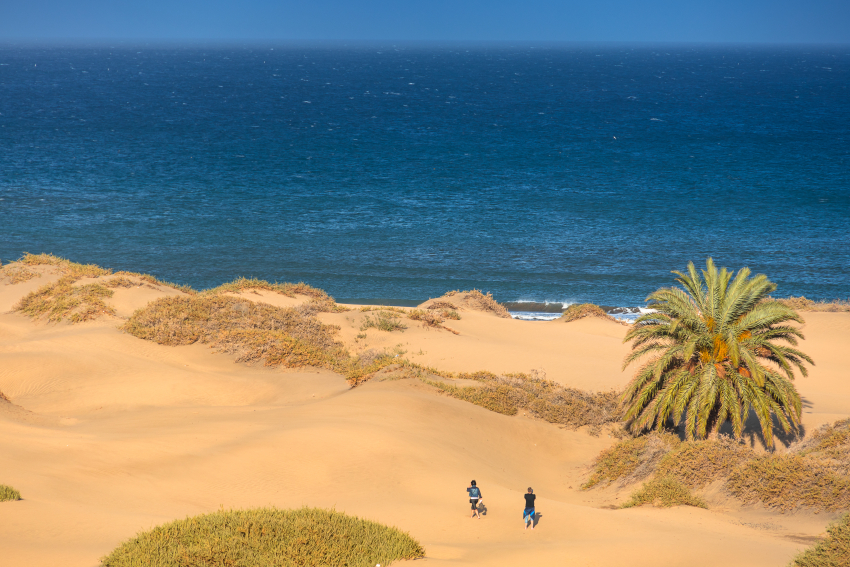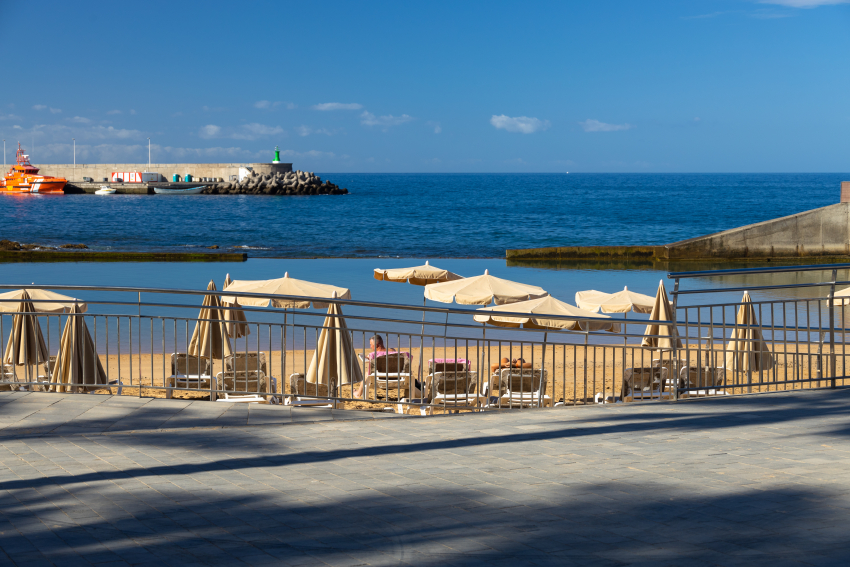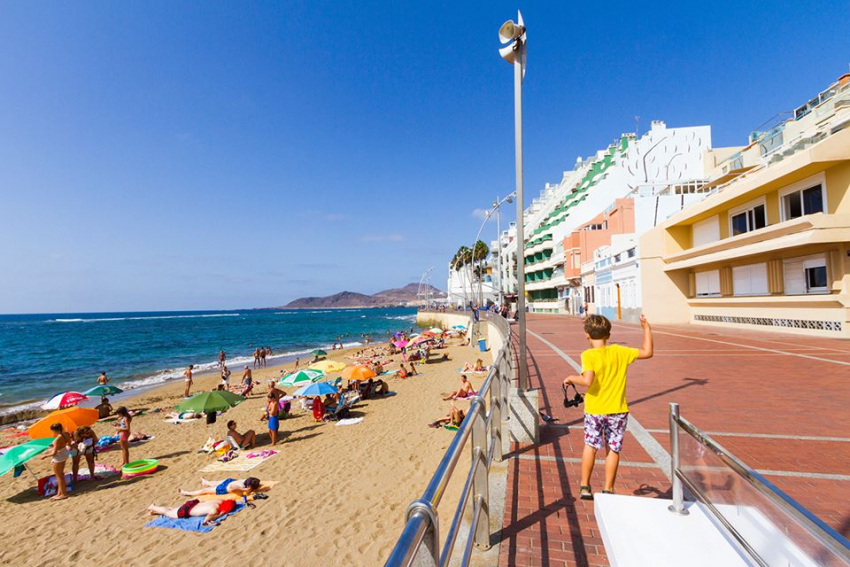Living In Gran Canaria: Resident Discounts & Perks
There are lots of perks to living in Gran Canaria, including the weather, the cheap petrol and wine, and the general smugness that it gives you. Then there are the Gran Canaria resident discounts …
Here’s our guide to the top discounts that Gran Canaria residents are entitled to.
Gran Canaria resident discounts on inter-island transport
Once you get your Gran Canaria residencia, make sure you register for the 50% discount on travel between the Canary Islands. Most municipios allow you to do it online, but the system isn’t perfect so it may not recognise you straight away.
If you have a problem, just head to your ayuntamiento and ask for “el certificado de residencia para bonificación de viajes”. It costs a few euros and you need to show it to each transport company at least once to get into their system as a resident.
If you book resident fares without a certificate, the travel companies will ask you to pay up, or even refuse you passage.
Travel To Mainland Spain for Gran Canaria residents
Canary Islands residents get 50% of travel between the islands and mainland Spain. However, be careful when you book an indirect flight through a Spanish airport. Some airline websites apply the discount to the second leg, then get in a huff when you check in.
The discount is only valid between the Canaries and your first Spanish stop.
Taking a car from Gran Canaria to the Mainland? The 50% discount also applies to ferry travel.
Money off the Yellow Submarine and other tourist attractions
Most tourist attractions offer a resident discount. For example, if you book the Yellow Submarine as a resident you get a 20% discount. Add this to the 10% discount you get for booking online, and you’ve saved a good chunk of change.
Frequent use tickets for residents
Another offer to look out for is frequent user tickets from theme parks like Palmitos Park. You can often buy a ticket that gives you unlimited trips for the cost of two or three visits. Not much use if you’re a tourist, but pretty good value if you are resident. The Angry Birds Park in Puerto Rico does an annual use ticket that is great value if you live close by and can use it regularly.
Discount museum & gallery entry
Lots of Gran Canaria’s museums offer cut-price entrance to residents. All you need is your green NIE form or card.
Also, look out for free entry days at Gran Canaria museums. For example, many museums are free on the first Sunday of the month.
Living In Gran Canaria: Opening A Bank Account
Getting a bank account in Gran Canaria is a doddle if you have an NIE or residencia. Just pick a bank and give them your NIE number, passport and a proof of address (utility bill, rent contract).
Then sign a lot of bits of paper and you have an account.
In theory, you can open a non-resident bank account with a passport. You may have to try several banks as some won’t do it without a NIE certificate. Commissions are high, so swap over to a resident’s account as soon as you can.
Which Gran Canaria bank to choose?
There isn’t much between them, but bear these factors in mind.
Smaller banks have few cashpoints and charges for withdrawing money can be eye-watering.
Some banks, such as Santander, don’t charge monthly commissions if you pay in your salary or pension.
Queues in bank branches get long, so pick a bank with a decent online banking system.
Here’s a selection of the main banks in Gran Canaria
La Caixa
La Caixa took over Bankia and now has more offices and cashpoints than any other Gran Canaria bank. Big branches have English-speaking staff and there is English speaking telephone support and English internet banking.
Santander Central Hispano
The same company as Santander in the UK, but you can’t transfer an account or anything convenient like that. Santander has plenty of Gran Canaria branches, a decent network of ATMs, and offers commission-free banking if you have a salary.
Santander has plenty of Gran Canaria branches, a decent network of ATMs, and offers commission-free banking if you have a salary. It even pays interest on your current account balance.
ING Direct
Dutch bank with a couple of Las Palmas branches. ING has an excellent online bank system and even decent queue management in its branches. A good mortgage option.
EVO Banco
A specialist online bank with a handy branch on Mesa y Lopez.
Bank Inter
A bank that does offer good mortgage terms to non-resident buyers
BBVA
Like Santander, but blue instead of red.
Barclays
The same company as Barclays in the UK, but you wouldn’t know it. If you have a UK Barclays account there is no advantage opening a Spanish Barclays account.
Share this:
Living In Gran Canaria: Renting Out Your Property
If you own a Gran Canaria property and want to rent it out, there are three ways to do it and each has its own advantages.
Short-term tourist rental in Gran Canaria
This is perfectly legal if your property is on land classified as residential (everywhere except the tourist resorts). In resort areas, it is more complicated as you have to have a tourist license, rent it out via a central management company, or apply for a license via an association such as ASCAV. Las Palmas has made noises about tightening restrictions on holiday lets and it is not allowed in many new builds.
You do not need the permission of the Comunidad to rent out a private apartment although a Comunidad can vote to ban all touristic rentals in a building or complex (with a majority vote).
You need to apply for a licence via the Gran Canaria tourist board (El Patronato de Turismo: Headquarters on Calle Mayor de Triana in Las Palmas).
Rates vary depending on location and property specifications. Cleaning costs are often added as a one-off extra charge for tenants. If you need a management company to handle bookings, keys, cleaning, etc, expect to pay at least 20% of the rent.
NOTE: Please speak to a quality estate agent before buying a rental investment property in Gran Canaria’s resorts. The law for resort properties is currently in flux and you need expert advice.
Long-term residential rentals in Gran Canaria
Renting out property in Gran Canaria is fairly easy. You can either do it privately by advertising in the local papers or on websites like Segundamano and FotoCasa, or by advertising it via an estate agent. Agencies traditionally charge the tenant one month’s rent, but some are now asking the property owner to pay this fee, or to split it with their new tenant.
Most owners ask for a month’s rent as a deposit and return it once the tenant has left, minus any costs for repairs (reasonable wear and tear cannot by law be deducted from the deposit).
One advantage of renting via an agent is that they handle the contract, but you can download example contracts.
If you are a non-resident, some agencies will manage your property (they arrange for plumbers if there’s a problem, etc) for a monthly fee of around €50.
Renting out Gran Canaria property the middle way
Many owners take a middle road between touristic rentals and residential lets by renting their property to people who spend several months a year living in Gran Canaria. They are often retired Brits and Scandinavians escaping the winter back home (known as snowbirds) but digital nomads are also flocking to Gran Canaria.
The benefits of renting to snowbirds are that you can charge more per month than for a residential let and don’t have to handle frequent keys and cleaning.
To advertise your property to snowbirds, post it on websites like AirBnB and specify a long minimum stay, or post on residential rental portals.
Renting and taxes
Non-resident property owners pay 24% income tax on rental income of all types while residents have to pay income tax. Residents pay income tax.
Most non-residents use a local Gestoria to handle their tax and paperwork.
Living In Gran Canaria: Property Tax Guide
 Buying a property in Gran Canaria costs about 10% of the price you pay once you factor in taxes and fees. Selling a property involves some costs but these only add up if you profit from the sale. The annual tax burden of owning a property in Gran Canaria is low.
Buying a property in Gran Canaria costs about 10% of the price you pay once you factor in taxes and fees. Selling a property involves some costs but these only add up if you profit from the sale. The annual tax burden of owning a property in Gran Canaria is low.
Article by Gran Canaria estate agent Laura Leyshon from Las Palmas property.
Here is a summary of all the annual property taxes you have to pay in Gran Canaria.
IBI: An annual property tax set by the local Ayuntamiento that is between 0.5% and 1% of the official value of your property (much lower than the market value). The IBI rate in Las Palmas is currently 0.73% while other municipalities charge slightly different rates..
Other ongoing costs...
IBI is the only monthly tax cost that you have to pay in Gran Canaria (San Bartolomé de Tirajana charges an annual rubbish collection tax). However, if you live in a building or a complex you have to pay a monthly communidad fee which is your share of costs like communal electricity, lift and pool maintenance and insurance.
The amount varies depending on the building and the facilities and services it offers.
Non-resident property owners must pay income tax on any rental income, plus IGIC (VAT) if they rent their property on a short -term basis. Even if a non-resident property owner doesn’t rent out their property, they still have to pay a small annual Sunshine tax.
Some municipios, such as Mogán charge an annual rubbish collection fee.
Gran Canaria property taxes at purchase
ITP or re-sale purchase tax
Buyers of re-sale property (as opposed to a new build) are required to pay the Impuesto de Transferencia de Propiedad which is 6.5% of the price paid for the property.
New Properties purchase tax
This is currently 7% if the house is finished or is being built at the time of the purchase. It is paid by the buyer.
A property buyer only ever has to pay one of the above two taxes.
Other Gran Canaria property purchase fees
While not strictly taxes you also have to pay Notary fees (around 300 euros for most properties, more if you buy with a mortgage) and Property Registry fees (around 300 euros). Most buyers use a Gestoria to handle the paperwork associated with a purchase (they charge around 250 euros).
Along with the 10% taxes and fees, you’ll need a minimum deposit of 10-20% if you get a mortgage (30% for non-residents) and 300 euros to pay for a valuation of the property you want to buy. Spanish banks also insist that you take out life insurance and property insurance at the same time as the mortgage. Legally your mortgage provider cannot force you to take out their insurance. However, it makes the whole process smoother if you do. You can always change to a better deal after a year.
Gran Canaria property taxes at sale
Plusvalía municipal
Paid by the seller to the Ayuntamiento where the property is located, this is also called the impuesto sobre el incremento de valor de los terrenos de naturaleza urbana (IIVTNU).
You pay plusvalia on the increase in value of the land that a property occupies during the period that you own it (capped at 20 years) and the amount varies depending on the period of ownership and the rates set by the Ayuntamiento.
Incremento patrimonial
Capital gains tax paid to the Spanish Treasury; Based on the difference between the sale price and the price paid by seller when he/she originally purchased the property (you can offset costs of improvements so keep your new kitchen and bathroom facturas).
As of 2016, the capital gains tax rate in Gran Canaria is 19% for the first 6.000 Euros, 21% from 6.000 to 50.000 Euros and 23% from that last amount upwards.
However, one advantage of the fall in Gran Canaria property prices over the last 10 years is that few sellers have to pay capital gains tax.
Tax exemption
Avoid paying capital gains tax by reinvesting the money from the sale of a main residence property into another main residence property within two years. EU nationals, even non-residents, can also avoid this tax if they buy a new main residence property anywhere in the EU within two years.
To claim the exemption you need to be able to prove that a property has been your main residence. A good reason to get a ‘certificado de empadronamiento’ certificate from your Ayuntamiento as soon as you buy your house.
Mortgage cancellation fees
If you cancel a mortgage when you sell a property, expect to pay 1% or more of the outstanding balance for the privilege, plus up to 1000 euros to register the cancellation at the Notary and Property Registry. You can sometimes pass the mortgage on to the buyer if the terms are acceptable.
Living In Gran Canaria: Importing A Car
When you see the prices of second hand cars in Gran Canaria you will probably think about importing a much cheaper car from mainland Europe or the UK. Whilst overall it can be cheaper importing a car there are many costs involved in importing a car to the Canary Islands and you need to consider them carefully before bringing your car here.
The first thing you need to know is that when importing goods into the Canary Islands the Canary Islands are not considered part of Spain, therefore any advice taken from Spanish companies will not be applicable to Gran Canaria, this is particularly important for importation tax. In Spain for some goods you are not liable to pay import tax, for the Canary Islands you are.
Important points on importing cars to Gran Canaria from the EU
If you have owned the vehicle for less than six months you will be taxed heavily.
If you have had a Spanish ID number (NIE) for more than 6 months, again you are liable to be taxed the import duty. This is 9-13% of the value of the car in Spain.
However, if you have owned the car for some time and you are a new resident in the Canaries you are allowed a one-off importation of your goods and import tax is not payable. You will need to obtain a document from your local authority in your origin country before you leave to demonstrate that you have been living there. This, along with local documents will prove your exemption from import tax.
There are additional charges once you arrive, these include matriculation and putting the car through the ITV. These can be up to 200€.
If you are confused have a look at the Agencia Tributaria website for the latest information however this can be often be even more confusing so if in doubt get in contact with a shipping agent such as Migrate Global Canarias.
Once you bring a car to the Canary Islands you are allowed to drive it here for up to 6 months before putting it on Spanish plates, if you don’t re-register it here in the Canary Islands within 6 months you are liable to pay extra charges. However if you take it out within 6 months you don’t have to pay anything.
You may have noted that used cars in the Canaries are not always good value for money. However, you should bear the above points in mind when deciding whether to ship your vehicle to Gran Canaria.
Driving your car into Gran Canaria
One alternative is to pack up your car, drive down to Cadiz or Huelva and use the ferry service. This can be an economical way of shipping a car and all your belongings to Gran Canaria, although it is not without cost and the sailing is 24 hours so it's quite a journey. Many people enjoy the adventure though, and if you already have Canarian residency documents you are entitled to a 75% discount on the ferry cost.
Shipping your car to Gran Canaria
Shipping vehicles to Gran Canaria, without actually driving them, is also common practice. From some parts of Europe and mainland Spain there is a roll-on, roll-off service, whereby you put your vehicle on the ferry at one end and collect it at the other end. Currently the only option available directly from the UK or Ireland is containerized shipping, which can be costly, but which is very safe and also offers you the option of moving personal/ household goods in the same container. The usual procedure is for you to deliver the vehicle to a nominated warehouse near your UK or Ireland address, where it will be loaded on a container, secured for sea transit and shipped here for you. If you are combining this with a household removal, that side of it would be carried out as normal, with a packing service if necessary, a collection, followed by loading together with the car at the warehouse.
Customs Clearance
All unaccompanied goods travelling between the Canaries and the rest of the world, including Europe and mainland Spain, have to clear customs. This is usually a paper-based procedure, although some containers are opened and inspected, but the important thing to know from the outset is the documents you will be asked for, which are NIE and certificado de empadronamiento (see ‘Paperwork’). If you have used a door-to-door removals or transport service you will simply be required to provide these documents and customs clearance will be carried out on your behalf. Otherwise you will need to appoint a customs agent to represent you and you will have to sign some further documents and provide an inventory of contents.
Living In Gran Canaria: Guide To Driving Well
Driving in Gran Canaria isn't so bad but there are a few things you need to know to avoid scares and fines.
Let’s start with avoiding fines as you can be fined for almost anything here, and knowing what fines exist will make your stay a lot cheaper.
Parking – don’t park on a yellow line. They will catch you and they will fine you.
Single white lines – If there is a single white line in the middle of the road you can’t cross it.
Carry all your documents ALL the time. The police can stop you anywhere and ask to see your paperwork.
You need...
Your permiso de conducir (driving license). This can be downloaded onto your phone on the Tráfico app.
Your permiso de circulación (Car certificate)
Your insurance AND the last bank statement showing you have paid it. If you don’t have the statement you can be fined. However, the police can now access this information from their cars so some insurance companies don’t issue papers any more.
Your ID (DNI or passport) – They can fine you for not having it.
Your last road tax payment.
You need to carry at least 2 flourescent bibs. One for the driver and one for each passenger. (buy them in the Euro shop or in a garage)
You have to have a triangle in case you have an accident.
Now the driving – Spanish drivers are fine. They are not the aggressive, erratic Seat Marbella driving lunatics you see on TV. However there are a few subtle differences in their driving that are worth knowing before you venture out on a Canarian road.
They use horn a lot, and will shout and gesticulate at you for no particular reason. Unless you have cut them up smashed into their new Seat or driven them off the road, ignore them – some people just like to overreact.
Gran Canaria drivers have no idea how to use a roundabout because in the Canarian driving test they are taught that any car in the outside lane has priority. Therefore, if you are going round the inside of a roundabout and someone overtakes you on the outside and you crash into them when you are leaving the roundabout, you will have a hard time convincing them it is their fault. You can try and use the inside lane if you want to be pedantic but its safer to always use the outside lane
Reverse parking – get good at it. Unless you want to pay extortionate Canarian parking fees you are going to need to know how to fit your wheels into a space designed for a bicycle.
But don’t be afraid driving in the Canary Islands. In general, it is no different from anywhere else and far easier than London. If you want to go up to the mountains though make sure you have a good head for heights, some of the roads in the south and on the north coast have over 1000 metre sheer drop on one side! The views are pretty spectacular though and it’s well worth soiling your pants for a bit to see them.
It is polite to pull over if you are driving the car that is holding up a load of locals on mountain roads.
Renting a car in Gran Canaria
If you choose to explore Gran Canaria by car, take all the hassle out of renting by using Mr Car Hire Gran Canaria...
Mr Car Hire, an independent rental broker, offers a complete Gran Canaria hire car service with car-to-door delivery anywhere on the island, fully comprehensive insurance and 24/7/365 support.
Best of all, he does it at great prices and offers top service, no queues, dirty cars or long waiting times.
Rent your car via Mr Car Hire and you'll get:
- A wide choice of cars at reasonable prices with absolutely no hidden extras
- Delivery to anywhere in Gran Canaria and car collection anywhere on the island
- Comprehensive insurance and 24/7/365 support and breakdown cover
- Personal service and a completely stress-free car rental experience
Contact him right here and Mr Car Hire be right back in touch.
Living In Gran Canaria: Buying A Car
Buying a second hand car in Gran Canaria is a fairly simple process provided you know some Spanish and a bit about cars. If not, get some help.
Living In Gran Canaria: Total Shopping Guide
With one of Spain’s top outdoor shopping areas and several well-stocked malls, Gran Canaria (and especially Las Palmas), has become a great place to shop. The new shopping centres due to open in Puerto Rico will make a big difference in south Gran Canaria.
The Ultimate Guide To Gran Canaria Schools And Education
So, you're moving to Gran Canaria with the kids in tow and wondering about schools. Here's the Gran Canaria Info guide to Gran Canaria schools and education.
The Ultimate Guide To Relocating To Gran Canaria
Unless you try to drive over, relocating to Gran Canaria isn't really any harder than moving anywhere else in Europe.
Tip Of The Day: Get Huge Discounts With Gran Canaria Expat Insurance
Gran Canaria's foreign residents now get up to 50% off their car insurance thanks to specialist expat insurance.
Gran Canaria Info recommends:
- Default
- Title
- Date
- Random


















